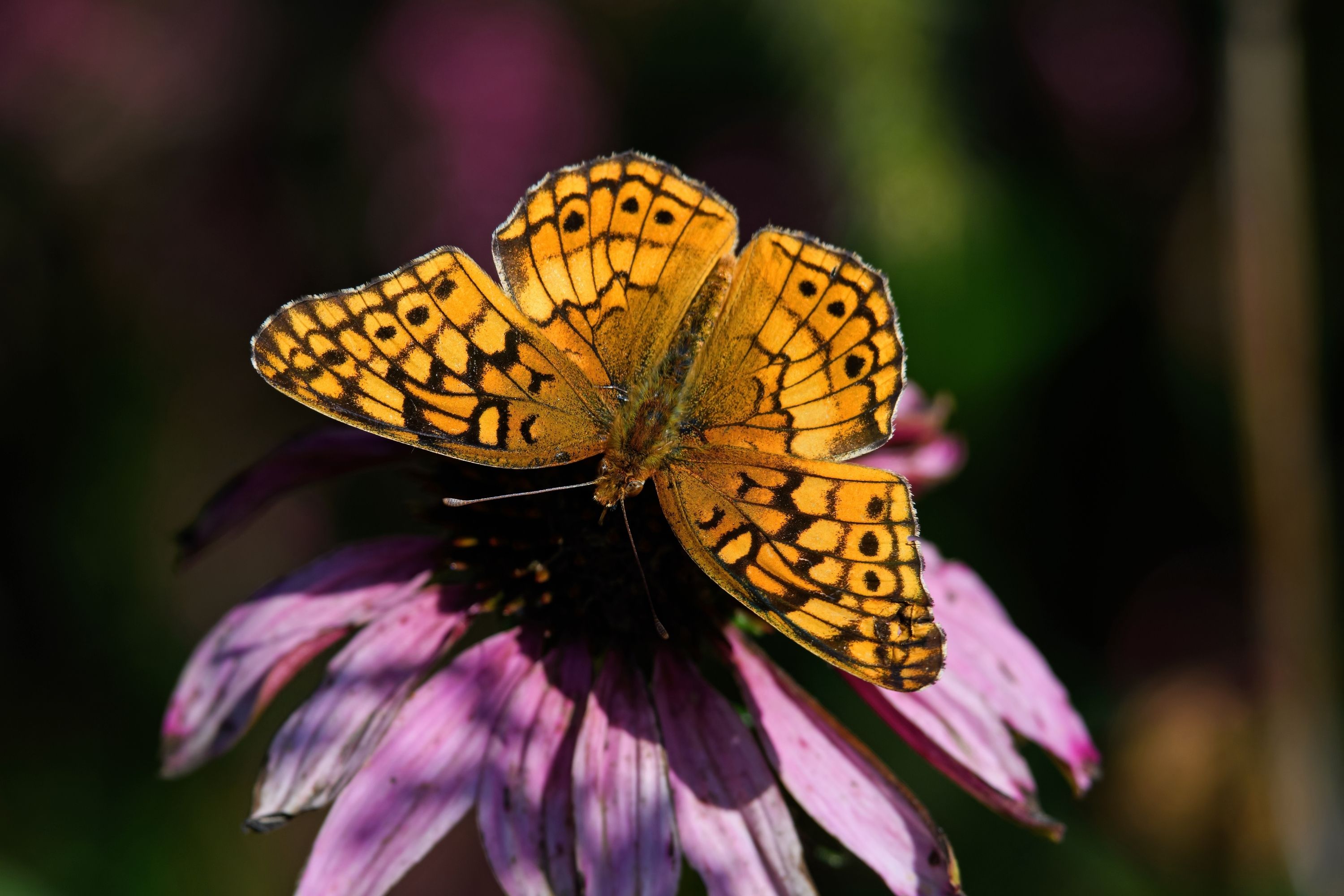Variegated fritillary
(Euptoieta claudia)

Description
Euptoieta claudia, the variegated fritillary, is a North and South American butterfly in the family Nymphalidae. Even though the variegated fritillary has some very different characteristics from the Speyeria fritillaries, it is still closely related to them. Some of the differences are: variegated fritillaries have two or three broods per year vs. one per year in Speyeria; they are nomadic vs. sedentary; and they use a wide range of host plants vs. just violets. And because of their use of passionflowers as a host plant, variegated fritillaries also have taxonomic links to the heliconians. Their flight is low and swift, but even when resting or nectaring, this species is extremely difficult to approach, and, because of this, its genus name was taken from the Greek word euptoietos meaning "easily scared". The upperside of the wings is checkered with orange and black. Both the forewing and hindwing have a row of submarginal black spots and black median lines running across the wings. The underside of the forewing is orange with a pale orange spot rimmed in black in the forewing cell. The underside of the hindwing is mottled with browns and grays with a pale postmedian band. There is no silvering. The wingspan measures 1.75–2.25 inches (44–57 mm). In the variegated fritillary's range, the only similar species is the Mexican fritillary (Euptoieta hegesia). The Mexican fritillary is brighter orange, the upper side of its hindwing basal area is unmarked, and the underside of its wings is plainer, with no submarginal spots or median black lines.
Taxonomic tree:







